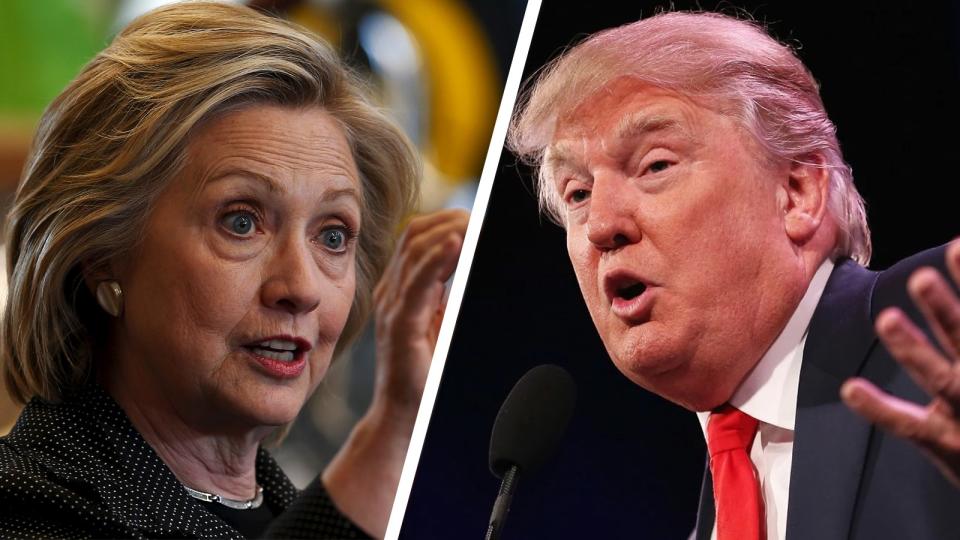Donald Trump has a big problem with email spam
Expert: Donald Trump’s fundraising message wound up in mail jail
If you didn’t get Donald Trump’s first email asking for money, you may be among the silent majority—that is, the silent majority of people who signed up for his emails but had this message silently dumped into a spam folder.
A full 59.3% of copies of Trump’s “The First One” email got filtered out as junk Wednesday, according to the mail-services company Return Path.
The New York-based firm maintains a consumer panel of some 2.5 million people to help gauge how marketing campaigns pan out in public, and Return Path’s tools revealed some insights about the presumptive Republican nominee’s digital campaign that he might not find flattering.
Read more: Trump goes all-in, Forgives $50 million in campaign lones
Down the trash chute
Having a service like Gmail classify a message as spam essentially pushes that email down the realm of electronic nonexistence techies call a bit bucket. Exceedingly few people will bother to check their spam folder later on.
“This is an issue where Trump has been struggling the most out of all the candidates,” said Tom Sather, Return Path’s head of research, in a phone interview Thursday.
As you can see for yourself on Return Path’s “Email for President” page, some of Trump’s worst days came in the 30 days ending May 27, when 19.94% of Trump emails got routed to a spam or junk folder. For Hillary Clinton and Bernie Sanders’ emails, the figures over that time were 18.9% and 3.92%.
Trump’s fortunes improved in recent weeks—his “spam rate” over the 30 days ending Friday dropped to 6.38%, while Sanders’ soared to 21.9% and Clinton’s inched up to 5.27%—but the fund-raising email’s performance seems likely to send it skyward once again.
Read more: Trump's economic plan would 'create a pretty noxious economic environment'
Sather did not have a good theory for why Trump’s messages would get such a hostile reception.
“Reaching the inbox is somewhat of an art and science, but it is something that every email marketer needs to and should be paying attention to,” he said.
It’s not so much a matter of avoiding a spammy writing style—Trump’s fundraising message contains none, unless you count 256 of its 1,883 characters being in all caps. But you don’t want to send a message in a way that looks suspicious, such as sending it from an unknown Internet address.
Do that, Sather said, and “spam filters will treat you like a dog on a short leash.”

With all that in mind, he pronounced it unlikely that this Trump message could have generated the $3 million the campaign says it did, which would surpass the $2.6 million and change President Obama pulled in with a June 2012 “I will be outspent” message.
Many campaign-finance experts are as skeptical that Trump’s one email could raise almost as much as the $3,104,619 in individual donations listed for all of May in his campaign’s latest Federal Election Commission filing.
Trump spokeswoman Hope Hicks did not answer an email sent Thursday asking for comment.
Read or delete
The emails that actually do land in the inboxes of recipients get attention, but not always of the welcoming sort.
Return Path’s stats show that Trump’s emails both get opened and marked as spam more than those of Clinton or Sanders. In the 30 days ending Friday, 20.09% of Trump’s emails were opened, well above the 13.85% of Clinton’s and 13.43% of Sanders’ that got the same attention.
Read more: 5 compaign promises that would hurt the economy
The average open rate across Return Path’s government/non-profit category is 11%; a 20% open rate is pretty spectacular. Trump’s “The First One” message got a 12% open rate.
Sather credited Trump for keeping his correspondence unpredictable—“part of it is just curiosity factor”—and less frequent, leaving recipients “not as fatigued.”
But in that same time, Trump recipients marked 3.1% of those emails as spam; only .41% of Sanders messages and .02% of Clinton’s met the same fate. Three weeks earlier, Trump’s would-be readers were even less forgiving, marking 9.34% of his messages as spam.
Return Path’s data doesn’t show any testing of alternative messages or targeting of specific audiences, Sather said. Earlier, he told AdAge’s Kate Kaye that another issue could be Trump’s use of email lists rented from outside sources, while Clinton and Sanders have been able to build contacts lists over decades in politics--and when Return Path checked its database on Friday, it found zero overlap between Trump’s list and the Republican National Committee’s list.
So whose accumulation of addresses has the Trump campaign leaned on? FEC filings show $201,073 in list-rental expenses paid to Newsmax Media, which runs a variety of right-wing news sites and publications; another $7,000 went to the contacts-processing firm Accurate Append.
Trump’s biggest disadvantage, in pure marketing terms, may be the small size of his mailing list. Return Path’s public data don’t show raw totals—Sather said its data could reveal growth rates but absolute numbers—but do indicate a consistent and enormous lead for Clinton.
Thanks to my own research for this story, both Trump and Clinton can add one address to their list. (I created a unique email for each by appending a plus sign and the candidate’s name to my Gmail username, so I’ll know if they sell that elsewhere.) I can report that both messages arrived within seconds, and that Gmail deposited Trump’s “Welcome to Team Trump” in my Updates folder, while Clinton’s “Welcome to Team Hillary!” landed in my Promotions folder.
Big cable has a plan to help you dump the cable box you're renting
There are worse things that manupulated 'Trending' stories lists
Email Rob at rob@robpegoraro.com; follow him on Twitter at @robpegoraro.
